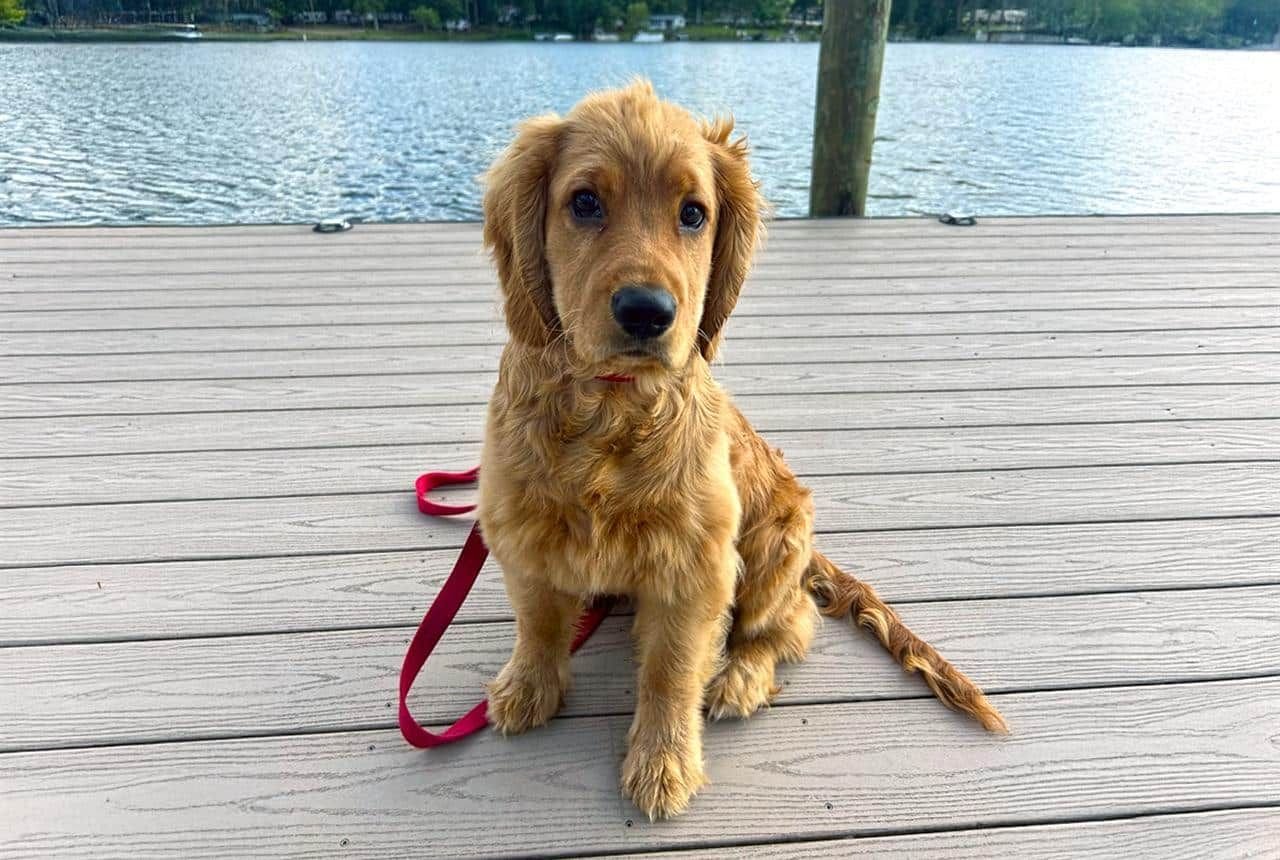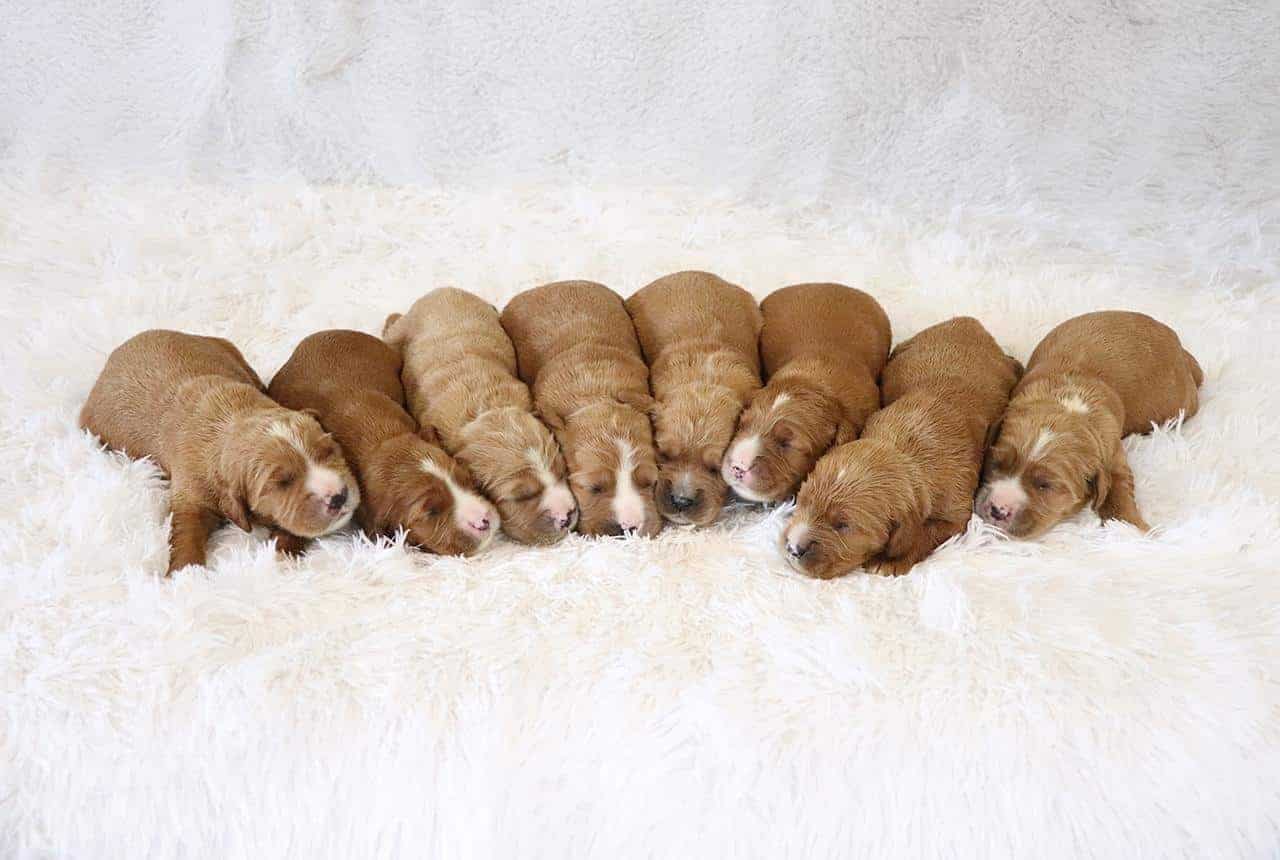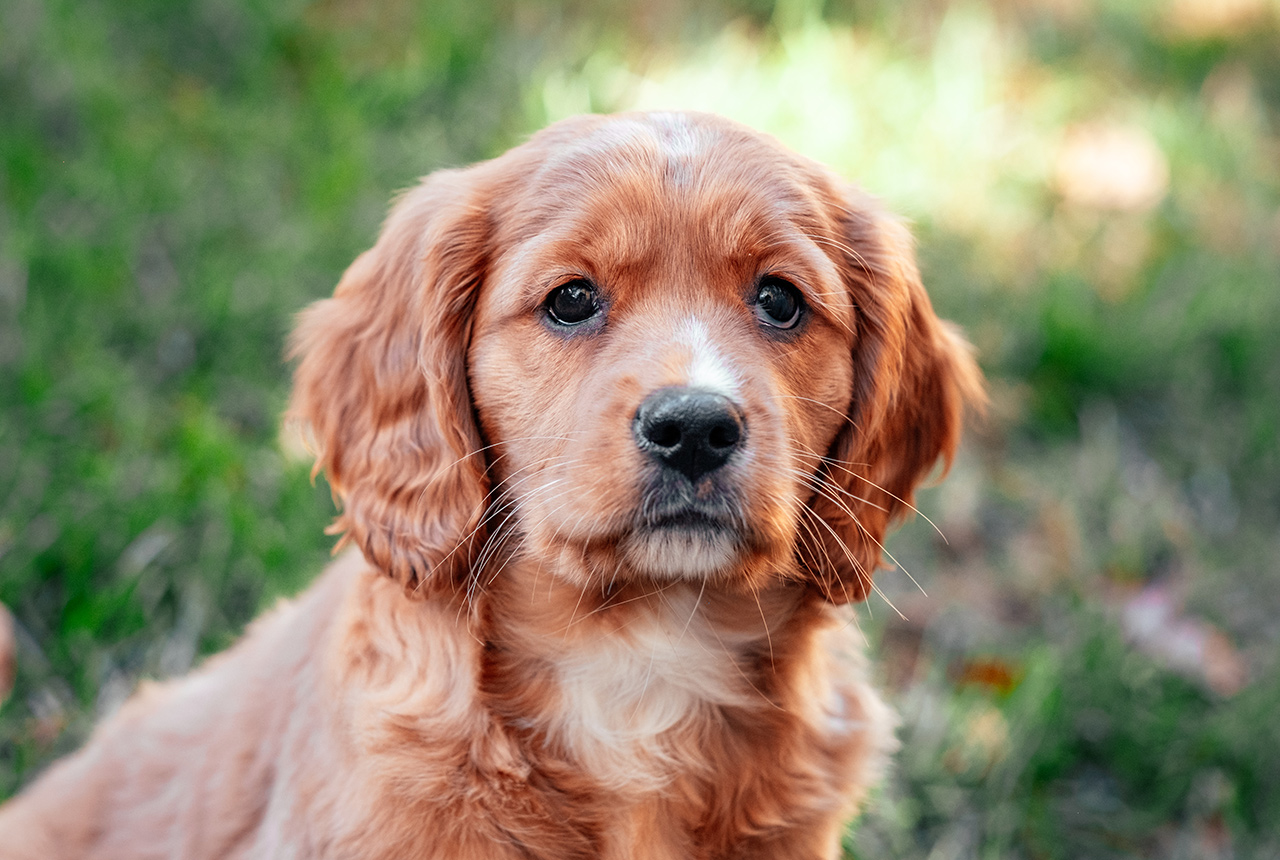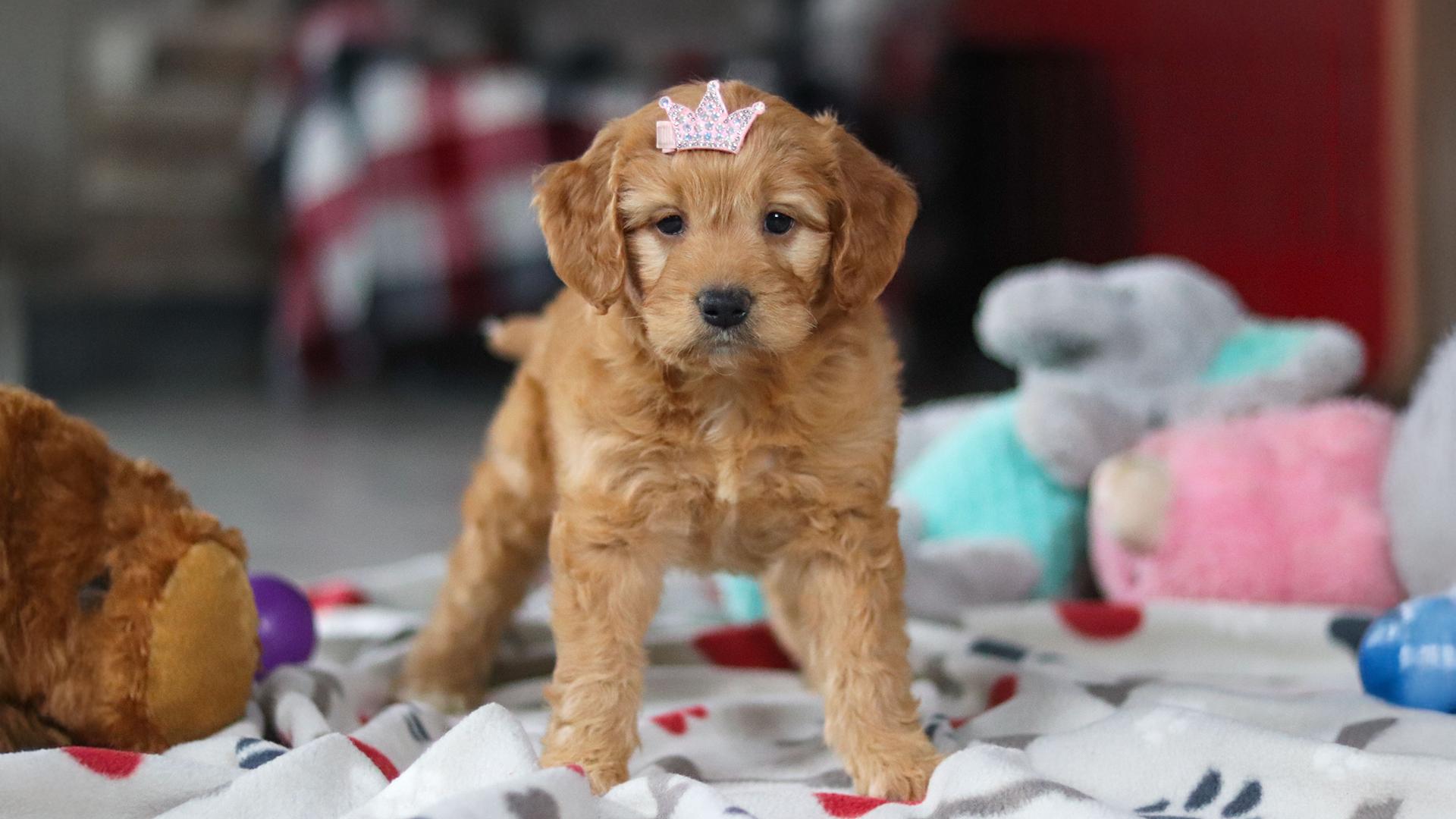
Mini Golden Retriever Size and Growth Chart Explained
Is there anything as exciting as bringing home a new puppy for the family to enjoy?
Being able to spend hours playing with your dog before relaxing on the couch and having them cuddle up next to you is a rewarding and stress-relieving activity that we can all appreciate.
Before you bring out the chew toys, it may help to get a better idea of how your new Mini Golden Retriever size will change over time. You want a space and living area perfect for them as they grow alongside your family. This way, by the time you have a Mini Golden Retriever full grown dog, you’ll be well equipped.
A little heads up to each phase of your pup’s life is a great way to support healthier growth in your home.
The Ins & Outs of an Average Mini Golden Retriever Size
A full-grown Mini Golden Retriever is extremely different from a puppy. They can grow up to 14 to 18 inches in height (at the shoulder) and weigh between 20 and 45 pounds, depending on their diet and gender.
While the Mini Golden is much smaller than a standard Golden, it is not a toy dog breed by any definition of the word. Think of them more as a small to medium-sized creature capable of eating quite a bit of food (based on activity level).
To put that in perspective, if you have a standard Golden Retriever, they will grow to 20-24 inches and weigh 55-75 pounds. If you own a Cavalier King Charles Spaniel, you probably already know they max out at 12-13 inches long and 18 pounds. It’s easy to see the Mini Golden Retriever size from that background.
What Impacts the Average Mini Golden Size?
Most of the time, genetics and parental breeds will be the top factors in figuring out how big and heavy your pup is going to get. You can look at the size of the paws as a good indicator because that is what the dog will “grow into” as it ages.
However, the generation of your full-grown Mini Golden Retriever also plays a role. For instance, you may have an F1 (50% Golden, 50% smaller breed) that goes toward the smaller side of the size scale. Or, you could have an F1B (75% Golden, 25% smaller breed) that is more toward the larger side.
After genetics, the size of your pup comes down to what you feed it, if it gets plenty of supportive healthcare, and what environment you train, play, and exercise in.
Growth Stages of the Mini Golden Retriever
Each stage, from puppy to Mini Golden Retriever full-grown adult, has different size implications. These may include:
- Birth – 2 Weeks (Neonatal): Incredibly fragile puppies that weigh only .5 to 1.5 pounds and are likely blind, deaf, and significantly dependent on the dam.
- 3-12 Weeks (Rapid Growth): About 10 pounds heavy when wet and start to socialize and explore the world around them.
- 3-6 Months (Juvenile): Grows quickly to the tune of 1-2 lbs. per week until 6 months when they’re about 60-75% of total size.
- 6-12 Months (Adolescent): Muscle develops, and energy hits a peak, but their height and weight will be just on the cusp of adulthood.
- 12-18 Months (Adult): You now own a full-grown Mini Golden Retriever.
Average Height & Weight
| Age | Height Range (in) | Weight Range (lbs.) |
|---|---|---|
| 8 weeks | 5–8 | 6–10 |
| 3 months | 8–11 | 10–15 |
| 6 months | 10–14 | 15–25 |
| 9 months | 11–16 | 20–35 |
| 12 months | 12–17 | 20–40 |
| 18 months | 12–18 | 20–45 |
Also Read: Golden Cavalier Lifespan – Way to Boost it
How to Support Your Mini Golden’s Healthy Growth
A well-bred Mini Golden Retriever size is balanced. They are smaller than standard Retrievers, but not small enough to be considered a lap dog. To ensure your pup is getting the most out of its height and weight genetics, you’ll need to offer some supportive health goals.
Always feed your dog a well-balanced diet, following the recommendations of your local veterinarian (including omega-3s, glucosamine, and lean meat proteins). You should track their weight gain so you’re not overfeeding with treats and compare progress to these charts.
As long as you’re encouraging structure, daily play, and offering healthy meals, you should have a loving pet to enjoy for years.
Full Grown Body vs Emotional Well-Being
A full-grown Mini Golden Retriever reaches top physical condition at about 18 months. That’ll be the size they’ll maintain for most of their adulthood and senior years.
The trick is that muscle tone develops much faster than emotional maturity. You could easily have a Mini Golden Retriever full-grown pet at home that still acts like a puppy, so be prepared! Emotional maturity tends to lag a little behind physique. The calmer nature will likely not fully develop until about 2 years old.
Should I Be Worried About Under/Overdevelopment?
Steady growth comes from quality food, plenty of activity, and consistent vet checkups. You’ll notice good weight gain progress, resulting in clean, healthier coats and bright, alert eyes.
As they grow, you do want to be on the watch for any red flags. Ask your vet to check for protruding ribs or spine or if there has been any rapid weight gain in a shorter period. Lethargy or weakness in the limbs is also a concern. Most of the time, this will mean a shift in nutritional diet more than anything else.
When you spay or neuter your puppy also matters. If the breeder you choose spays too early, it could impact bone plate closure, which lowers final height goals. Ask ahead of time when the breeder spays or neuters as an indication of their knowledge of the breed.
Does Hybrid Background Matter with Size?
The Mini Golden Retriever size will vary based on its genetic makeup. Even when you have a single litter from the same dam and sire, you can expect different weight and height variations.
The anticipated size of your puppy is only one minor consideration. You want to focus more on finding a healthy, well-tempered pet that will work well in your and your family’s daily activity levels.
Mini Golden Retriever Size Compared to Other Breeds
| Breed | Height (in) | Weight (lbs.) |
|---|---|---|
| Mini Golden Retriever | 12–18 | 20–45 |
| Standard Golden Retriever | 20–24 | 55–75 |
| Cockalier | 12–15 | 12–28 |
| Cockapoo | 10–15 | 15–25 |
| Cavapoo | 9–14 | 12–25 |
The Tricks Breeders Use to Estimate Size
Ethical and reputable breeders are fantastic at predicting a Mini Golden Retriever full grown size. They’ll look at everything from parental indicators, genetics, health history, generation type (F1, F1B, etc.), and growth trends of previous litters.
The breeder will also use their own intuition. Over time, quality breeders develop a “sixth sense” for identifying which dogs will be the largest or have the best temperament. That is why you often hear about the “pick of the litter” as an option when adopting a pet.
You should also discuss living conditions with your breeder. The last thing anyone wants is an oversized dog living in a small urban apartment without preparation. While a full-grown Mini Golden Retriever is a smaller dog, it still needs space to run and play to feel healthy.
Conclusion
Knowing the Mini Golden Retriever size expectations before you adopt goes a long way to ensuring you have the proper living space set up for your beloved pet. Talk to your breeder and get genetic testing. That will give you all the info you need so your new furry family member has a safe, healthy, and welcoming environment to thrive.
Think a Mini Golden is right for you? Apply now to show your interest — it’s free until you choose your puppy!




